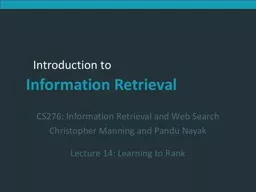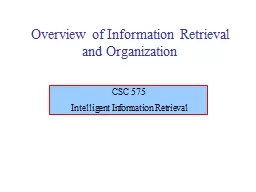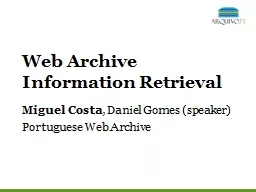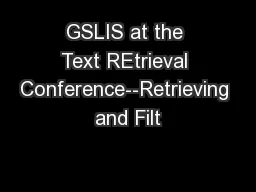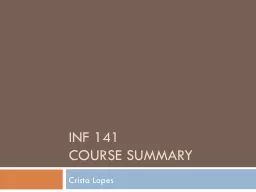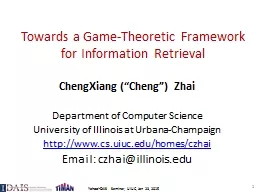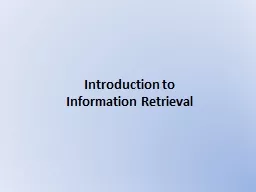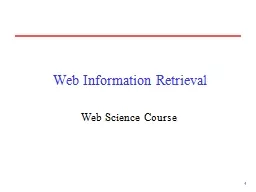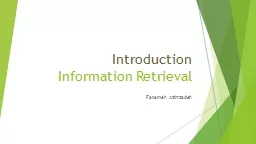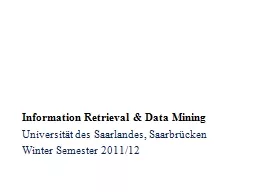PPT-CS276: Information Retrieval and Web Search
Author : karlyn-bohler | Published Date : 2018-10-24
Christopher Manning and Pandu Nayak Lecture 14 Learning to Rank Machine learning for IR ranking Weve looked at methods for ranking documents in IR Cosine similarity
Presentation Embed Code
Download Presentation
Download Presentation The PPT/PDF document "CS276: Information Retrieval and Web Se..." is the property of its rightful owner. Permission is granted to download and print the materials on this website for personal, non-commercial use only, and to display it on your personal computer provided you do not modify the materials and that you retain all copyright notices contained in the materials. By downloading content from our website, you accept the terms of this agreement.
CS276: Information Retrieval and Web Search: Transcript
Download Rules Of Document
"CS276: Information Retrieval and Web Search"The content belongs to its owner. You may download and print it for personal use, without modification, and keep all copyright notices. By downloading, you agree to these terms.
Related Documents

